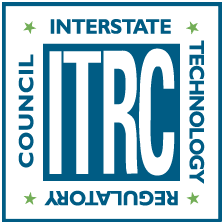5.6 Project Risks and Uncertainty
Successful long-term management is flexible enough to adapt to technical difficulties, changing site conditions (for instance, as a result of changes in regional pumping or climate change), changes in available technologies, stakeholder involvement, regulatory compliance, and other financial and legal factors. These variables are included in the process through the long-term management plan’s evaluation of project risks and uncertainty.
The long-term management plan includes a comprehensive and descriptive strategy to identify and respond to key project risk events that warrant planning a contingency response (ITRC 2011d, 2012). The risk register and contingency planning tools described in previous ITRC guidance (ITRC 2012) may be particularly useful for assessing long-term risk at complex sites. This guidance includes a risk management checklist to help identify significant site-specific uncertainty factors that may result in project risks and uncertainties, including stratigraphy, contaminant behavior, effects of climate change and other changing site conditions, technology implementation, and regulatory issues. Project risks and uncertainty can also result from inadequate site characterization, CSM data gaps, and from design assumptions and limitations in technology application. Appropriate steps (for example, characterization to fill data gaps, pilot testing, and monitoring) may be added to the long-term management plan to address significant uncertainties.


